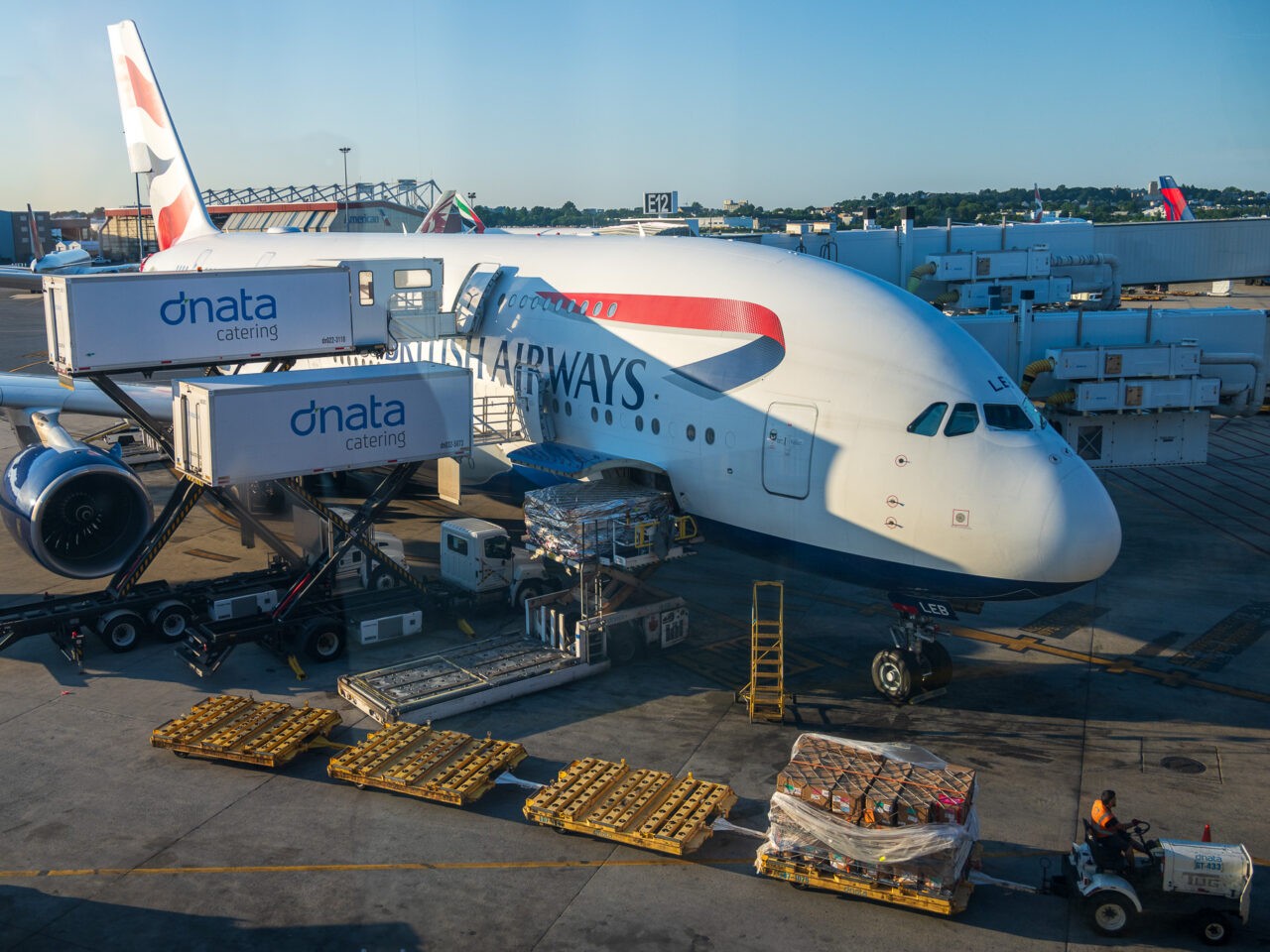
July 2, 2024
From Terminal E at Logan Airport in Boston …
It’s been a couple of years since my last international travel to Israel, so it’s good to be starting another trip. And I’m really looking forward to this one!
After what seems like weeks of pre-departure prep and packing, the day starts early on United Flight 641 from Washington Dulles to Boston Logan. That leaves me with a fairly good layover, but after several very busy days getting ready, I’m happy to take it easy for a few hours before we board British Airways Flight 212 to London Heathrow. And that leaves time for an extended post with some background, the itinerary, and a review of the photo gear I’m traveling with …
As a graduate student at Ohio University working towards a Master of Fine Arts in Film Production, I decided to minor in Art History as a way to study composition, light, and shadow. My art history coursework focussed on Florence, Venice, and the Renaissance. Between that and watching Stanley Tucci: Searching for Italy I knew I needed to get to Italy. And although I’ve been traveling for a number of years, all these years later I still haven’t made it to Italy while everyone I know has! So now it’s time for me to see Italy in-person.
The itinerary for this trip includes a return to Greece and Turkey. I’ve avoided returning to a place I’ve already been, mostly because there are other places on my bucket list that I’d like to see first. But this trip features places in Greece I haven’t been before … and the Aegean islands really are worth visiting again … also, the food in Greece was incredible! I’m looking forward to a few weeks of Mediterranean cuisine!
So here is the itinerary for this trip to Italy, Greece and Türkiye!
| July 2, Day 1 DC to Boston to London | Fly to London |
| July 3, Day 2 London to Milan to Venice | Travel from Milan to Venice with dinner enroute |
| July 4, Day 3 Venice | Venice walking tour, St. Mark’s Square, St. Mark’s Basilica, Doge’s Palace |
| July 5, Day 4 Venice to Florence | Verona tour, Romeo and Juliet balcony, Verona Arena, travel to Florence |
| July 6, Day 5 Florence | Palazzo Vecchio, Piazza della Signoria, Chiesa di Santa Croce, Ponte Vecchio, Duomo, Gates of Paradise, Giotto’s Bell Tower, Dante’s House |
| July 7, Day 6 Florence to Rome | Travel to Rome, Ancient Rome, Colosseum, Forum Romanum, Piazza Venezia |
| July 8, Day 7 Rome | Vatican City, Vatican Museums, Sistine Chapel, St. Peter’s Basilica, Spanish Steps, Trevi Fountain, Pantheon, Piazza Navona |
| July 9, Day 8 Rome to Sorrento | Travel to Naples, Capri, and Sorrento |
| July 10, Day 9 Sorrento to Pompeii to Bari to Patras | Pompeii, travel to Bari, overnight ferry to Patras |
| July 11, Day 10 Patras to Olympia to Tolo | Olympia, Ancient Olympia, travel to Tolo |
| July 12, Day 11 Tolo to Athens | Mycenae, Epidaurus, Corinth Canal, travel to Athens |
| July 13, Day 12 Athens | Parthenon, Acropolis, Temple of Athena Nike, Omonoia Square, Syntagma Square, Temple of Olympian Zeus, Hadrian’s Arch |
| July 14, Day 13 Cape Sounion | Cape Sounion, Temple of Poseidon |
| July 16, Day 15 Celestyal Discovery | Cruise to Kusadasi, Turkey Cruise to Patmos |
| July 17, Day 16 Celestyal Discovery | Cruise to Rhodes |
| July 18, Day 17 Celestyal Discovery | Cruise to Crete Cruise to Santorini |
| July 19, Day 18 Return to Athens | Free day |
| July 20, Day 19 Athen to London to Boston | Fly to Boston |
| July 21, Day 20 Boston to DC | Fly to DC |
What I’m packing … This is a lengthy trip and requires careful consideration of what to bring, balancing what I want to carry (or can) with capturing the best photos and video of a bucket list trip! I’m bringing the Nikon Z8 mirrorless camera with the recently released Nikkor Z 28-400mm f/4-8 VR zoom lens. For a faster ultra-wide option I’m bringing the Nikkor Z 20mm f1.8 S prime lens. For timelapse video and places where a smaller camera might be more manageable, I’ve got the DJI OSMO Pocket 3. Getting clean ambient audio of locations is key to making post trip edits faster, so I’m bringing a DJI Mic (just the mic transmitter and not the receiver). Although I’ve traveled with the Vanguard Kinray Lite for many years I’m bringing a different camera bag on this trip. I recently got a hold of the Gura Gear Kiboko City Commuter 18L+ for use on this trip. With its rear panel camera compartment and roll top access, this will take some getting used to, but I think will be a good addition to my travel kit.
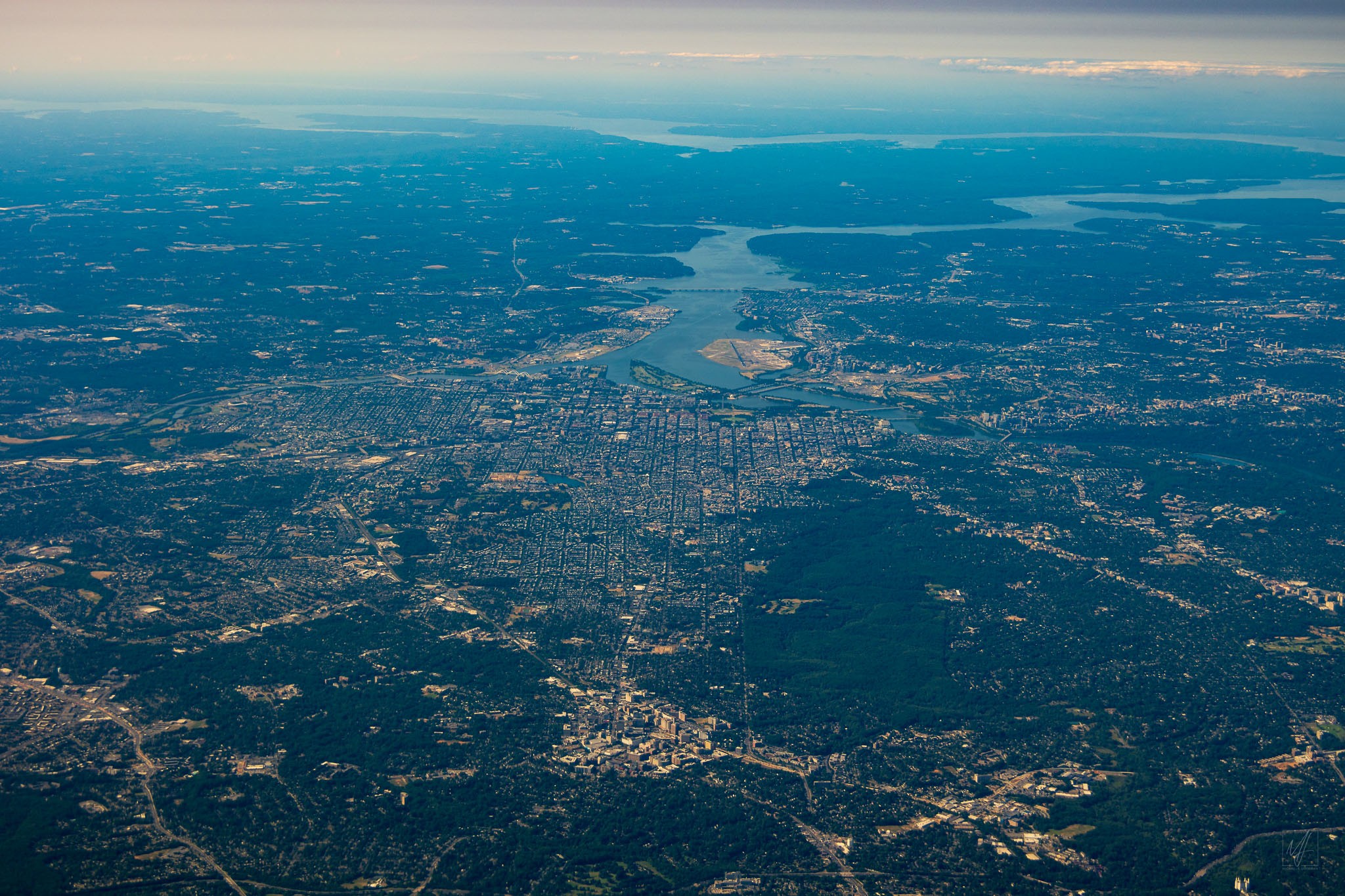
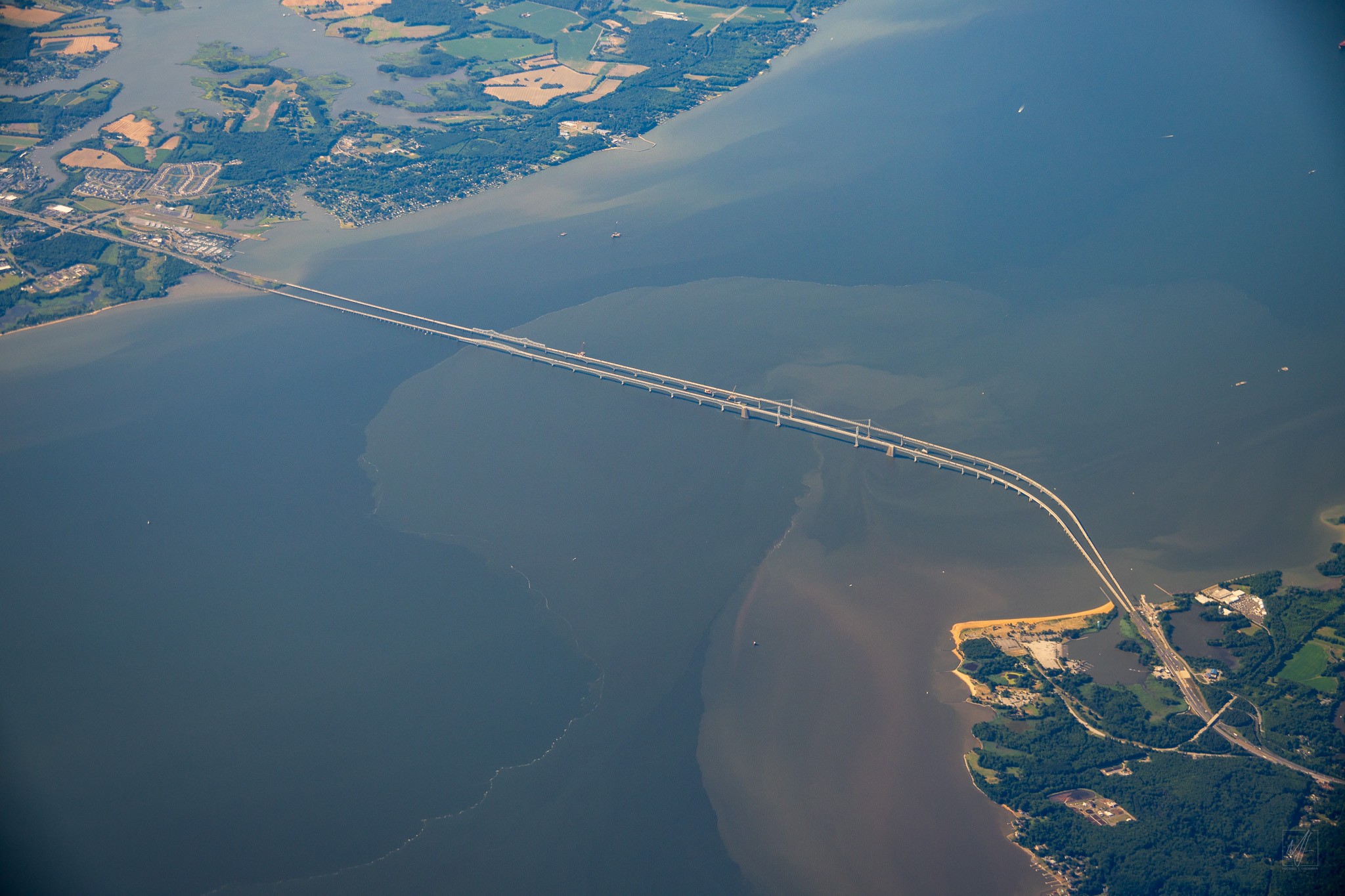
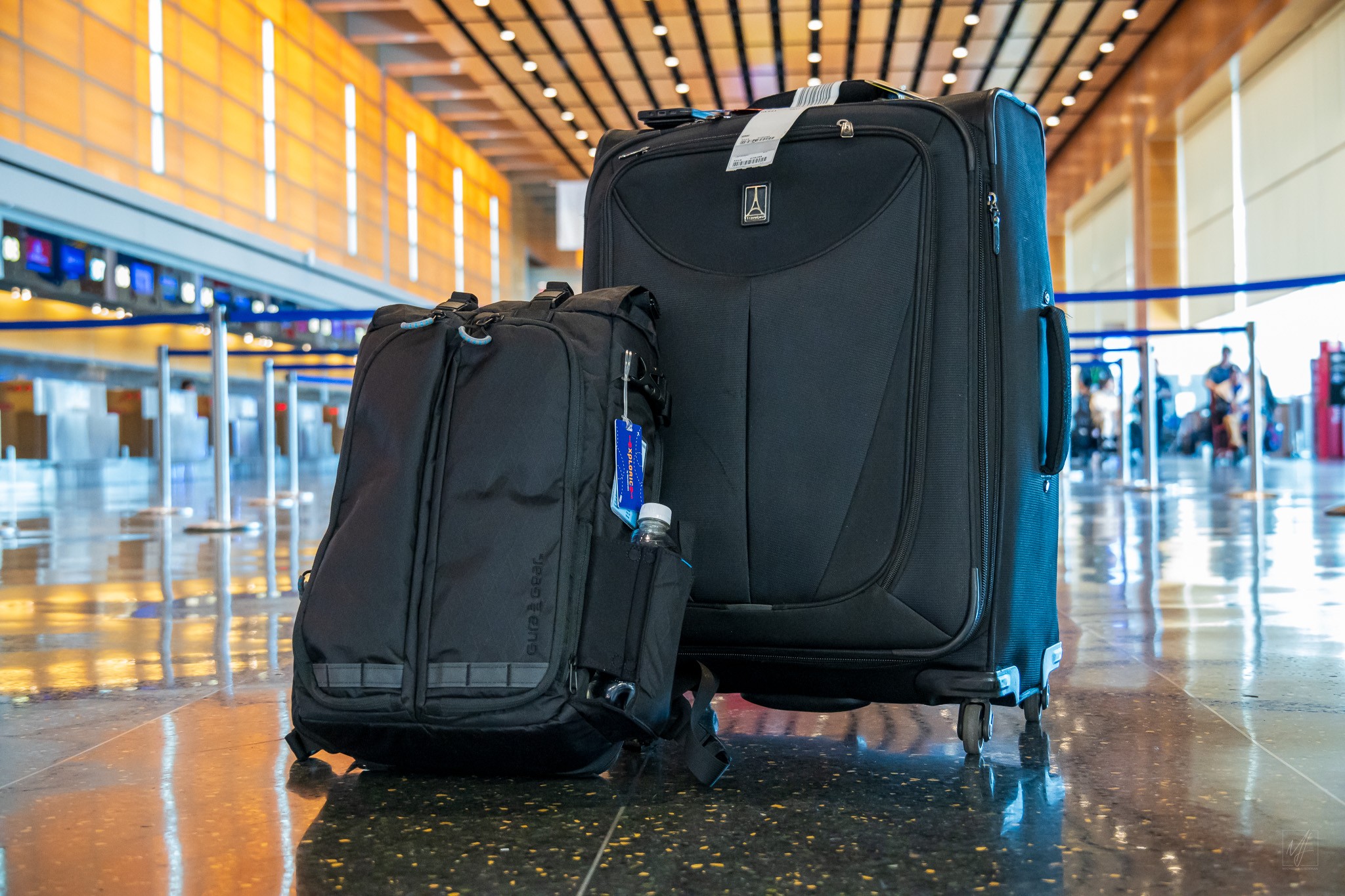
While I’m traveling I will post updates here on the blog each day. If you want to get an email when I post an update subscribe by entering your email address in the subscription box. I’m looking forward to sharing these updates with you!
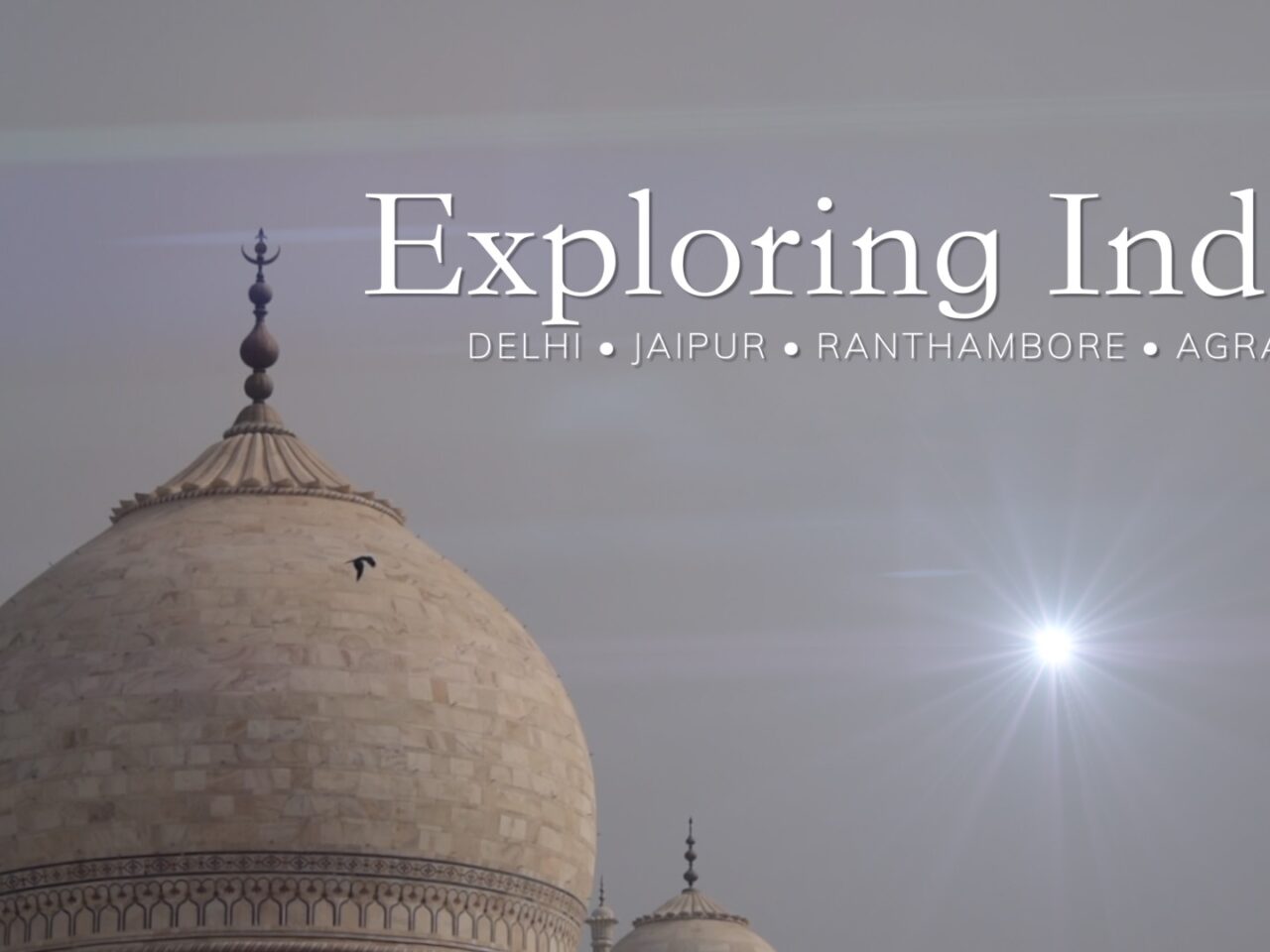
For years I thought I would travel to see the Taj Mahal by packing what I could fit in a small ZipLoc baggy, flying to Delhi, taking the train to Agra, visiting the Taj Mahal, and flying back home. Two days there, two days back. Done. Thankfully this trip was so much more.
From the Old Delhi Market, the Amber Palace in Jaipur, the tiger safari and Star on the Earth Society school in Ranthambore, to the Days for Girls presentation and Taj Mahal in Agra, India had so much to see!
You can read more about the India trip here and take a look at the highlights of our trip to see Delhi, Jaipur, Ranthambore, Agra, AND the Taj Mahal …
For those of you interested in the technical details … The video was recorded with a Nikon D750 DSLR with a Nikkor 28-300mm super zoom lens and an iPhone 8, with editing on Final Cut Pro. More technical details in my India Photo and Video Workflow post.
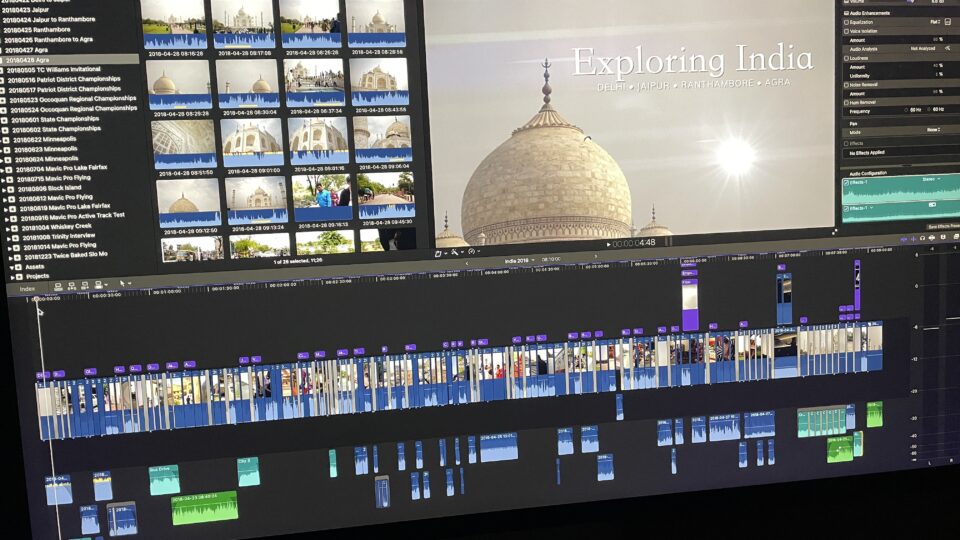

Note: This post is way overdue. I’m writing this in April 2025 – a year after the eclipse last spring – but dating this as April 27, 2024 like it was posted just a couple of weeks after the event when I completed editing of the eclipse images.
I documented the 2017 Great American Eclipse shortly after that event. Capturing a partial eclipse in the northern Virginia area of the mid-Atlantic was a thrilling photographic and astronomical experience. Watching the moon converge over the sun, seeing the dimming ambient light, and feeling the atmospheric cooling on a blazing hot August afternoon made me want more! So I circled April 8, 2024, on my calendar and although this would once again be a partial eclipse in my neighborhood, I knew I would travel somewhere in the path of totality for a true total eclipse experience.
Luckily my sister and brother-in-law live in Louisville, just south of the path of totality for the 2024 eclipse. And a friend extended an invitation to join an eclipse viewing party at their house on Grandview Lake in Columbus, Indiana … almost in the center of the path of totality. We had an eclipse destination and travel planning was underway!
But since 2017 I’d updated the gear I used to photograph that eclipse. Gone was the Nikon D750 DSLR and the Nikkor 200-500mm f/5.6 lens … replaced as part of my transition to mirrorless. I still had the Gitzo tripod, the HDMI viewing monitor, and the solar filters, but now I’d be using the Nikon Z8 mirrorless camera and the Nikkor Z 100-400mm f/4.5-6.3 S lens. So, leading up to the event there were three areas of preparation …
Preparation in each of these three areas began in early March, 2024 …
| March 4, 2024 | Solar eclipse exposure test (partly sunny 68). This initial test was done with using the Nikkor Z100-400mm lens with the Z TC-1.4x Teleconverter attached. Sampled a range of shutter, aperture, and ISO settings similar to the 2017 eclipse. Results with the TC weren’t very sharp. |
| March 14 , 2024 | Solar eclipse exposure test (Scattered clouds 75). |
| March 17, 2024 | Solar eclipse exposure test (Broken clouds 72). This time without the teleconverter using settings recommended in the Hudson Henry video mentioned earlier. Improved sharpness. |
| March 22, 2024 | Solar eclipse exposure test. |
| March 26, 2024 | Solar eclipse full rehearsal for timing and batteries. Nikon Z8 with Nikkor Z 100-400mm on Gitzo Carbon Fiber tripod using a Benro S4 video head. Nikon Z6ii with Nikkor Z 14-30mm on Peak Design Carbon Fiber Travel Tripod. Black Pearl Flysight RC801 7″ HDMI monitor for viewing. No photos taken, but confirmed all batteries would make it to the end of the event. |
| March 27, 2024 | Gear pack test. I planned to pack most of the camera gear in a Think Tank Airport Accelerator backpack and the Gitzo tripod in a small suitcase that I planned to check. But the Gitzo would not fit safely in my TravelPro 21″ spinner. |
| April 3, 2024 | Gear pack test. I decided to mount the Nikon Z8 on the Peak Design Travel Tripod and leave the Gitzo at home. But I also mounted the Nikon Z6ii on the Gitzo Monopod with the Benro IN00 Double Action Ball Head using the Benro Articulating Base for Monopods and it was surprisingly solid! |
| April 4, 2024 | Solar Eclipse Test to confirm the camera and mount plan will work. |
| April 4, 2024 | Gear pack. I pack everything as I plan to travel and I’m good to go! |
| April 5, 2024 | Final Solar Eclipse Rehearsal at home before packing and traveling. |
| April 7, 2024 | Final Solar Eclipse Rehearsal in Louisville. |
| April 8, 2024 | Total Solar Eclipse in Columbus, Indiana. |
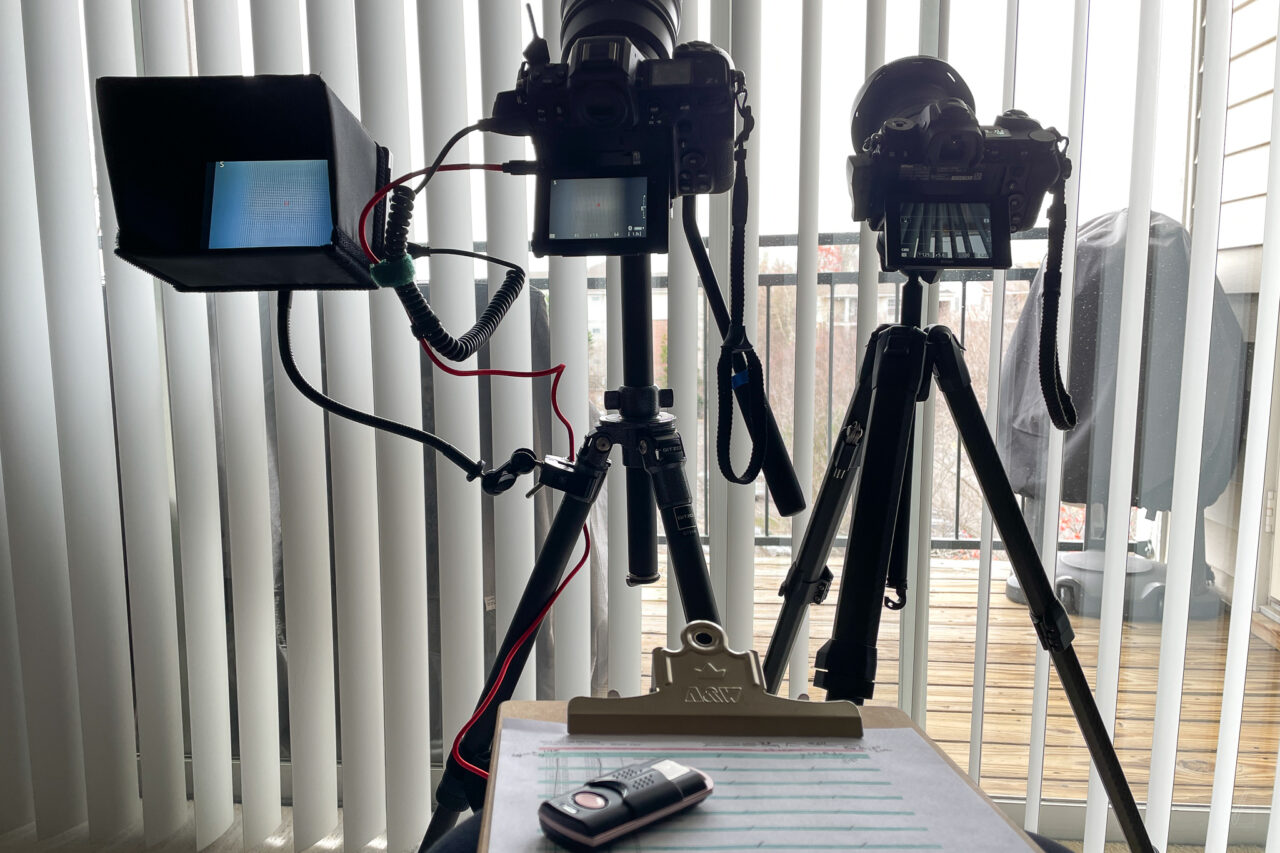
Here is what I pack:
I flew out to Louisville on Saturday, April 6. I’ve been traveling to Kentucky for well over thirty years and I’ve experienced much of what the Bluegrass State has to offer. But I’ve never had a “Hot Brown” at The Brown Hotel. So on Saturday night we went downtown to The Brown Hotel for dinner. A Hot Brown is an open-faced turkey sandwich covered with Mornay sauce and broiled until golden brown on top. It’s a Louisville tradition dating back to the 1920s and it’s delicious!
That Sunday afternoon I took advantage of some nice weather and did a final solar eclipse rehearsal with a full setup of all the gear that I would use the next day. On Sunday evening I charged up all the batteries. The preparation and planning was done. Time for the actual event!
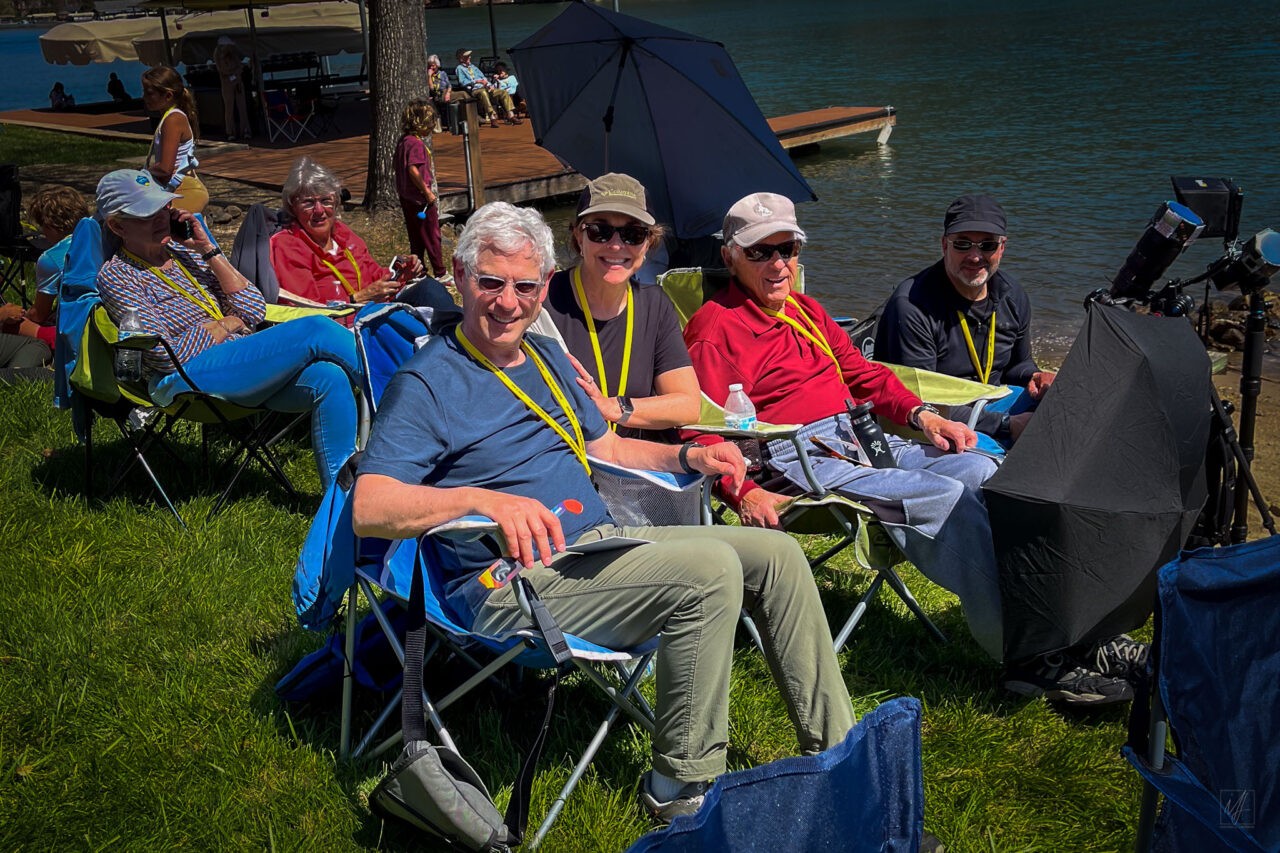
Carlyn, Bill, and I leave the house at 8 AM on Monday, April 8, to pick up Irwin and then head across the Ohio River and into Indiana. The weather looks good! It’s a two-hour drive from Louisville to our destination in Columbia, Indiana. There are over 100 people attending the viewing party and it’s very well organized! We check in, get our lanyards, grab some coffee and danish, and find a good spot near the lake waterline to setup our chairs and my camera gear. I was worried that trees in this location might block part of the eclipse view, but the sun is well overhead and in early April there isn’t much foliage on the trees yet. Around 11 AM there is a lecture about the solar eclipse and eclipse viewing safety from a University of Louisville astronomer and a box lunch is provided!
At 1:45 PM I turn on and aim the cameras to take a couple of reference photos before the event starts. Five minutes later at 1:50 PM the eclipse begins. I’ve mapped out a plan on a spreadsheet to capture closeup views of the eclipse with the Nikon Z8 to get a solar disc composite through various stages of the eclipse, the Diamond Ring, and the Prominences. With the Nikon Z6ii I’m capturing a wide angle view with a composite of the solar disc over the lake.

During the 155-minute event I’ve mapped out a plan to capture images every five minutes with both cameras. I quickly settle into a cadence. Centering the sun in the Z8 viewfinder. Snapping a still on both cameras. Watching for a few minutes. And then repeating the sequence. I’ve got the most amount of camera equipment at this viewing party. And I’ve got the large monitor for a great view of what the Z8 is seeing. A steady stream of eclipse party-goers stop by to take a look. It’s great to meet the people here and to be able to share the closeup view!
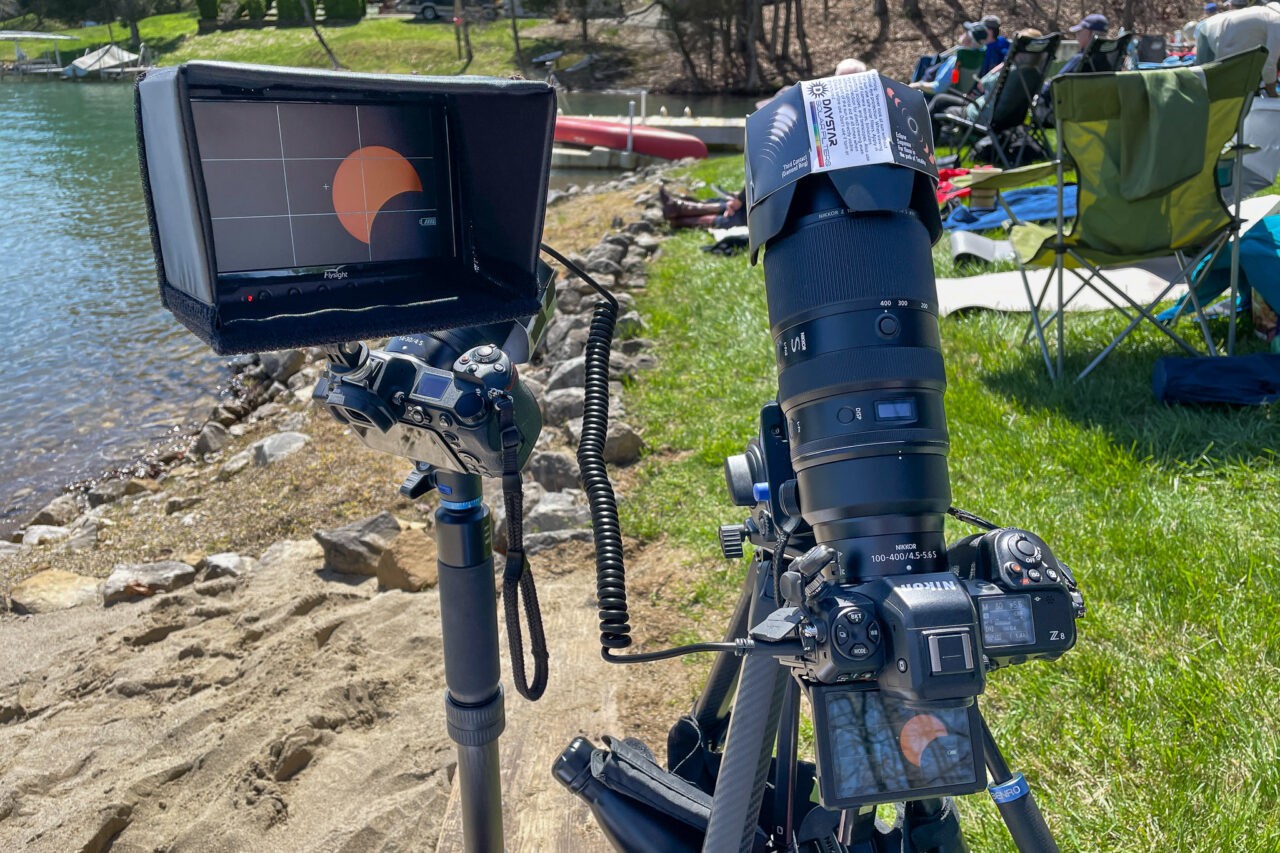
Slowly the environment around the lake changes. It’s like sunset … but hours earlier. And then the moon moves completely in front of the sun. Totality begins! At our location totality runs from 3:05:36 PM to 3:10:01 PM. And for the next 4 minutes I’m busy. The solar filters come off. Exposure on both cameras is changed. My attention shifts to the Z8 to capture the Corona, Diamond Ring, Baily’s Beads, the Chromosphere, and Prominences. I make sure to capture a wide angle view of totality with the Z6ii. And then I stop to look around and take in the moment. It’s the middle of the afternoon. There isn’t a cloud in the sky. And yet, it’s dark like the sun had set 30 minutes earlier. It’s unlike anything I’ve ever experienced. Several minutes later the sky begins to lighten. The solar filters go back on and I shoot the second half of the eclipse.
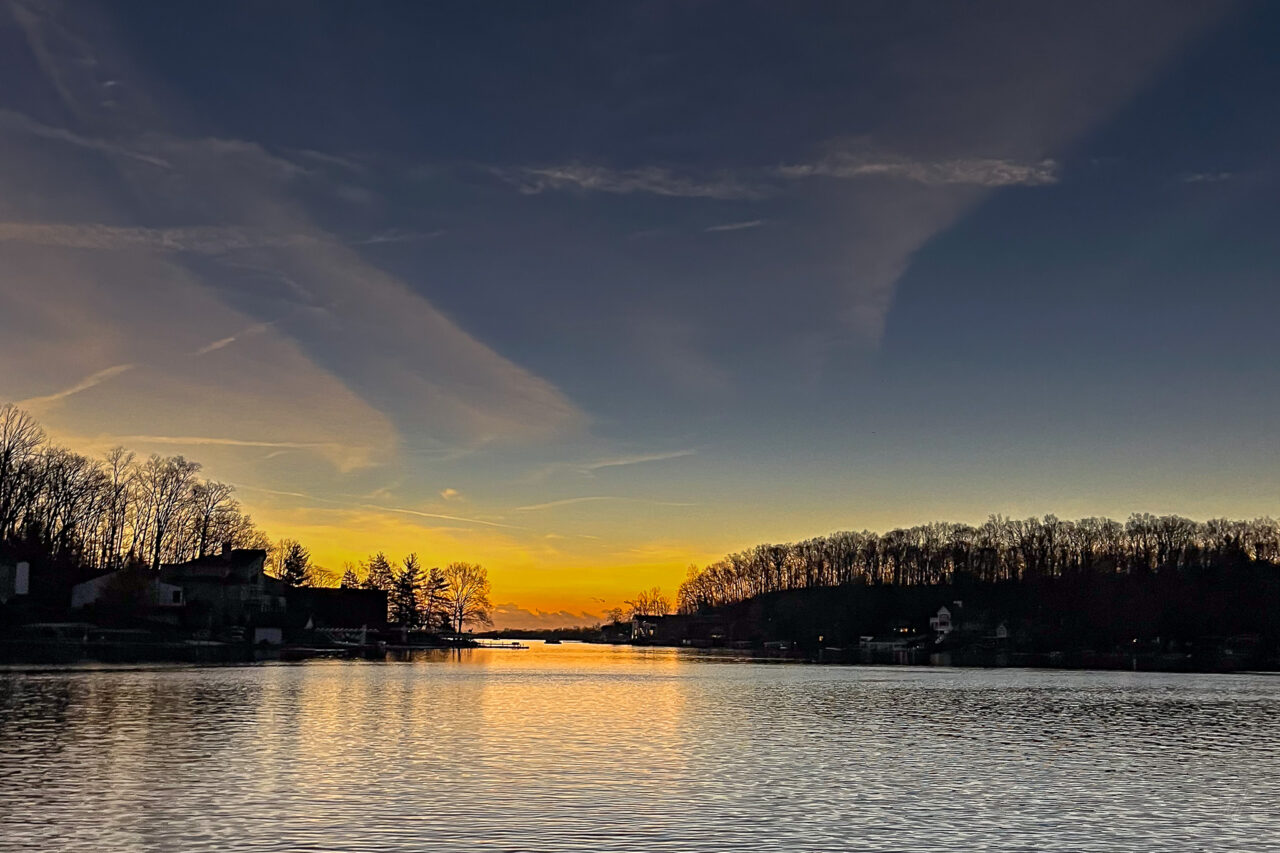
The eclipse ends at 4:23 PM. A few minutes later I’m packed up and we start the drive back to Louisville. And it seems most of the population of Kentucky is doing the same. It’s bumper-to-bumper traffic for many miles. What was a two-hour drive earlier in the day is a much longer drive on the way back. But plenty of time for me to review images from both cameras, download a few to my phone, and to do a quick post to Instagram and Facebook.
I’m back home a couple of days later, but no time to download these pictures and process yet! I unpack all the gear and then repack for the next trip. I’ve got a wedding in Los Angeles the following weekend, and while I’m there I’m photographing the IndyCar Acura Grand Prix of Long Beach. I don’t start processing the eclipse photos until the last week of April. I relied on a couple of resources to guide the processing … Hudson Henry’s Tips for Editing Your Eclipse Photos and Nebula Photos Basic Processing Tutorial. Here are the four finished images and the editing steps I used …
With the Nikon Z6ii I made the Solar Eclipse Landscape Composite, capturing a wide-angle view of the lakeside lawn, the eclipse party participants, and 33 images of the eclipse.

Here are the steps to process this composite:
In Lightroom …
• Select all photos for composite
• Edit In > Open as Layers in Photoshop
In Photoshop …
• Shift Click to Select All Layers
• Blend Mode > Lighten
• Arrange as needed
• Flatten then Save
With the Nikon Z8 I photographed the Solar Disc.
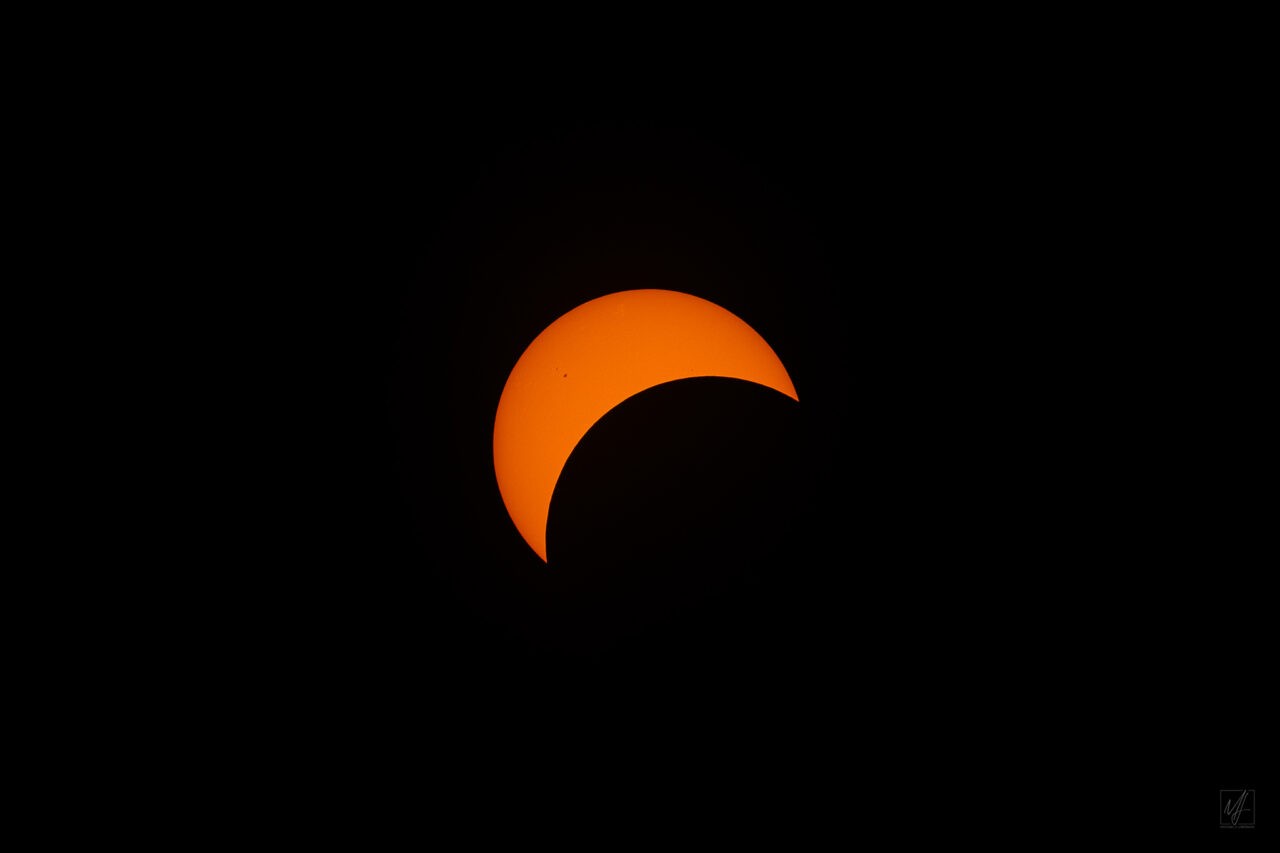
Processing to eliminate the orange cast is relatively simple in Lightroom …
• Increase contrast ~35
• Reduce Blacks ~25
• Increase Sharpening ~25
At the height of totality I photographed 9 bracketed images with the Nikon Z8 for the Prominences Composite.
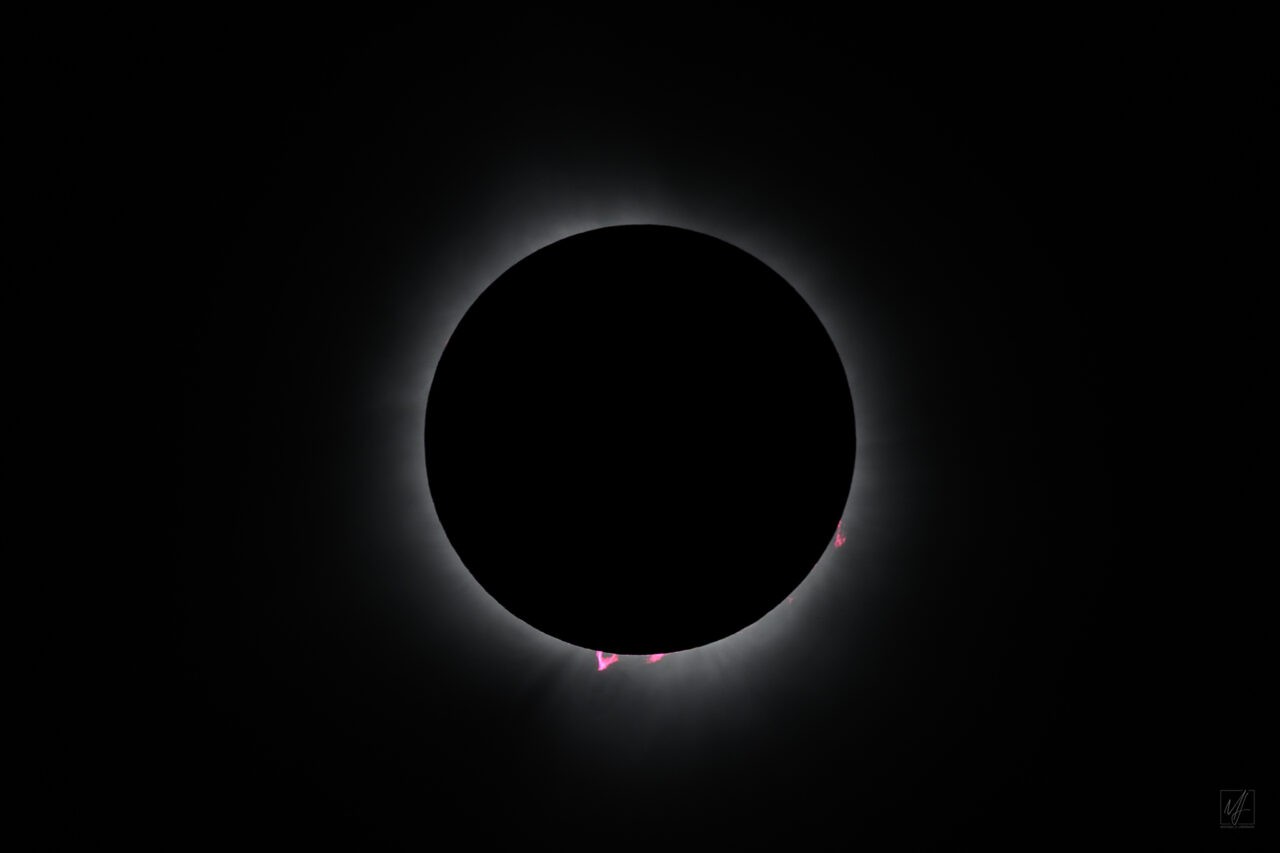
Processing for this image was more complex:
In Lightroom …
• Select 9 photos from Bracket
• Enhance > Super Resolution
• Edit In > Open Layers in Photoshop
In Photoshop
• Align Layers with Opacity at 50%
• Select All > Layer > Smart Object > Convert to Smart Object
• Layer > Smart Object > Stack Mode > Median
• Filter > Camera Raw
• Increase Exposure ~ 4
• Reduce Highlights ~12
• Increase Whites ~12
• Mask > Select Moon > Reduce Blacks
• Flatten then Save
The Solar Disc Composite combines 9 solar disc and prominences images photographed with the Nikon Z8.
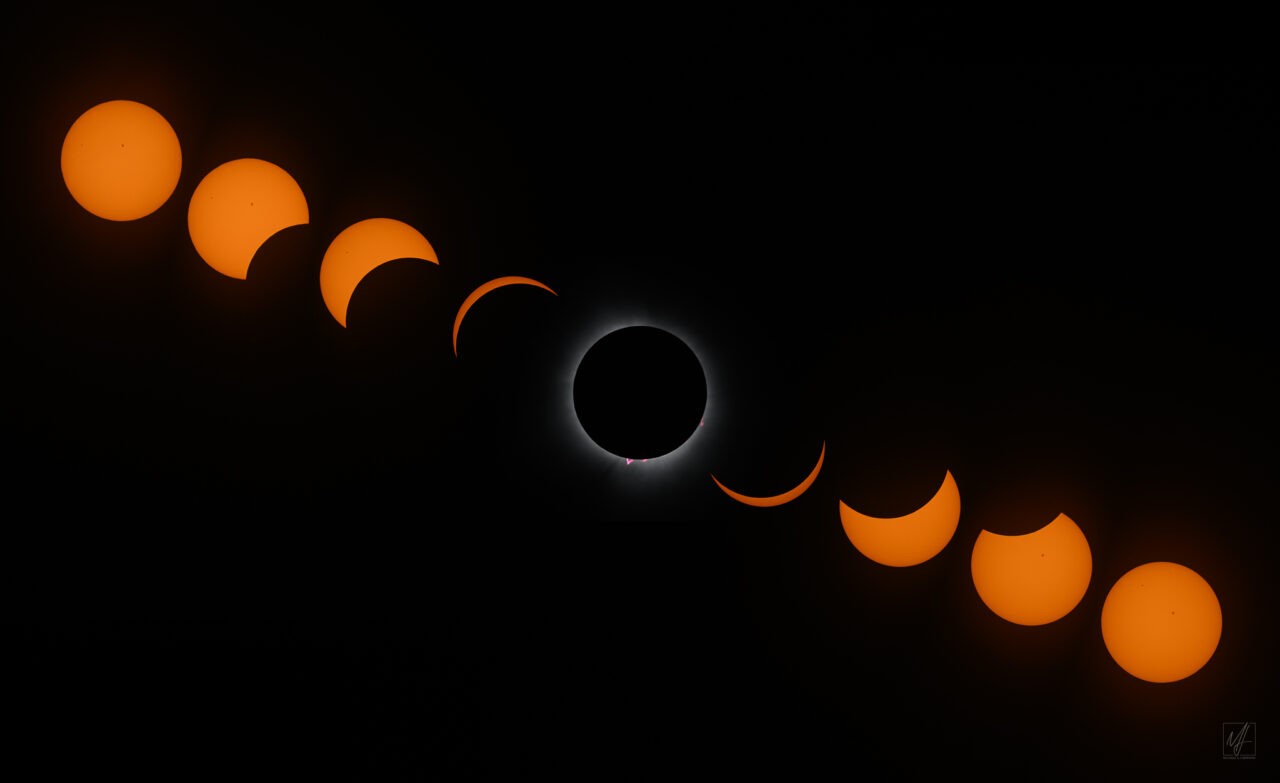
Here are the steps to process this composite:
In Lightroom …
• Select all photos for composite
• Edit In > Open Layers in Photoshop
In Photoshop …
• Shift Click to Select All Layers
• Blend Mode > Lighten
• Arrange as needed
• Flatten then Save
Experiencing a solar eclipse in the path of totality was an incredible experience!! I’m grateful for the opportunity to be able to capture the images. And thankful to Carlyn, Bill, Irwin for putting up with my very OCD approach to participating in the event, and thankful to our hosts for the perfect location … and whatever they did to ensure clear skies!
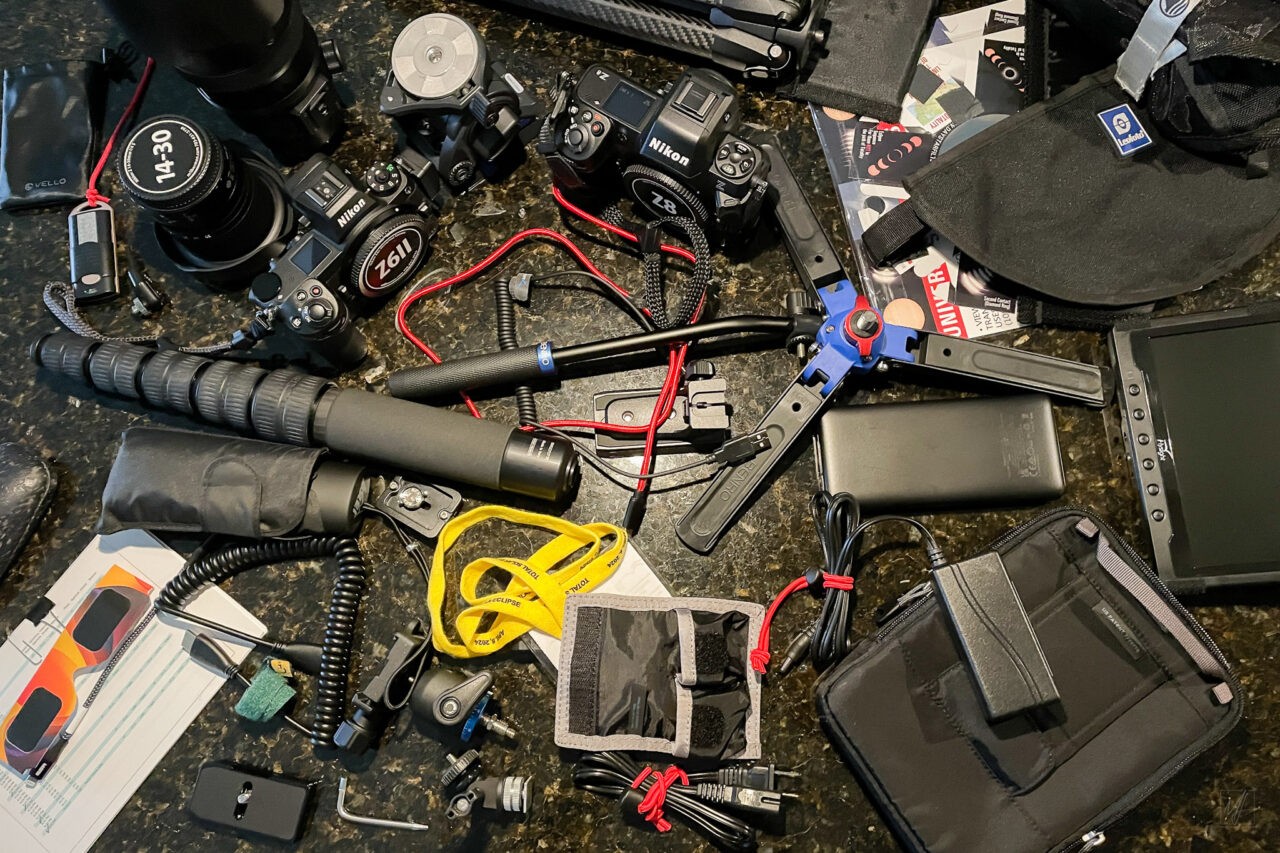
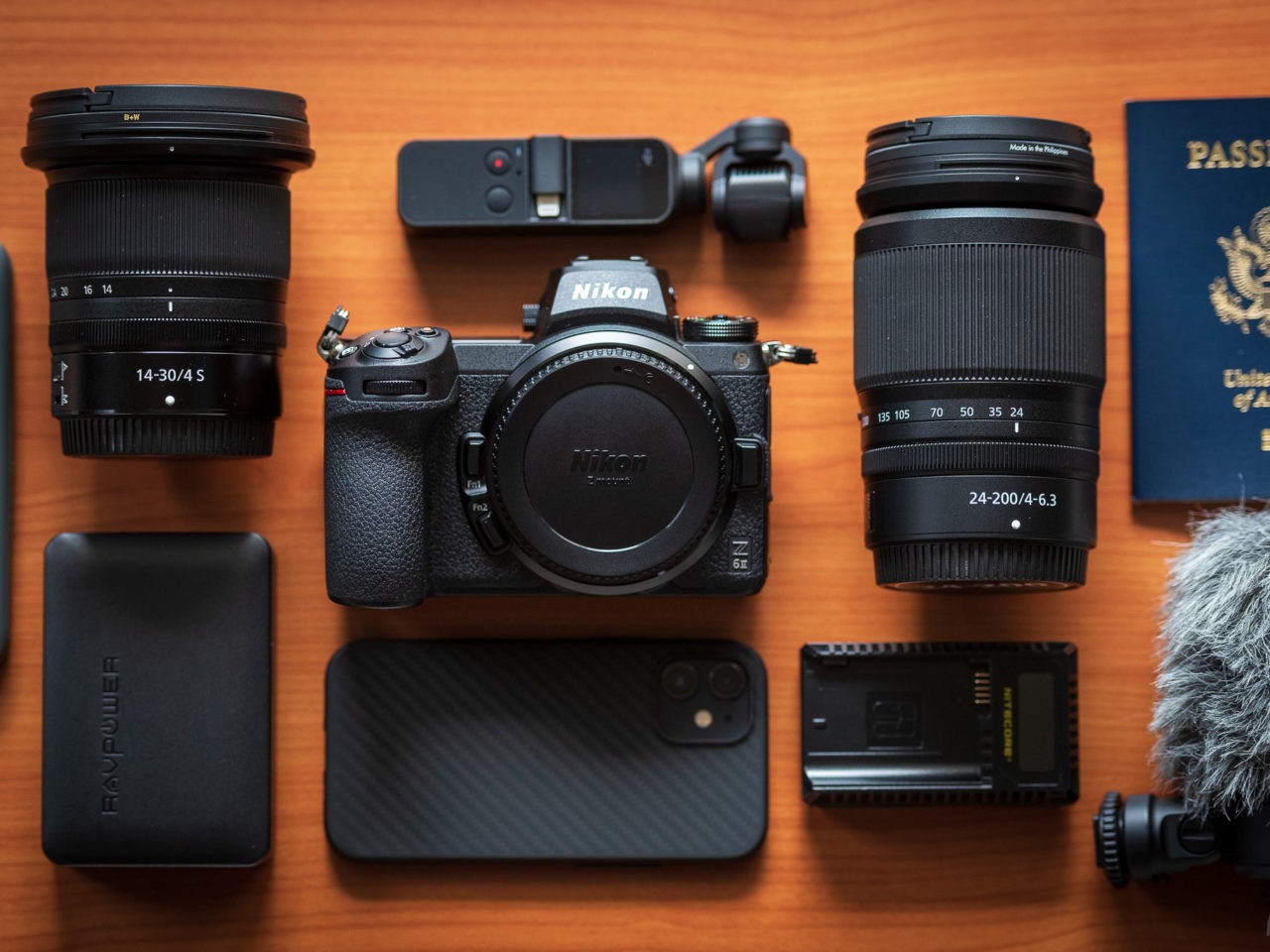
It’s been two and a half years since my last international trip to Brazil. From global to personal, those two and a half years were filled with some life changing events – specifically COVID-19 and my retirement, but also some travel related changes. I’m using a new camera, a new phone, and a couple of new apps. And that means some changes to the gear and workflow I’ve been using for a while.
I mentioned in the Israel Day 1: DC to Tel Aviv post that this trip had been postponed from the spring of 2021 due to the COVID-19 global pandemic. COVID-19 changed how we travelled – from vaccination requirements to multiple PCR and antigen tests before and during the trip. But the good news is that were were able to travel and we were able to travel safely. Israel was just opening back up to tourism and in many of the locations we visited we were the only tourists around.

So here is the Israel gear and workflow update. Every trip requires a carefully considered pack list that balances the demands of international shooting locations with the willingness (or ability!) to carry a certain amount of equipment. Despite the tension and hostility that seems to be always ongoing in Israel, the Gaza Strip, and the West Bank, I felt comfortable traveling to Israel with photo gear.
As I did for Brazil, Southeast Asia, India, Cuba, Peru, South Africa, and Galapagos, here is an overview of the gear I carried to Israel followed by the photo and video workflows I used to handle the media files when I returned.
Read More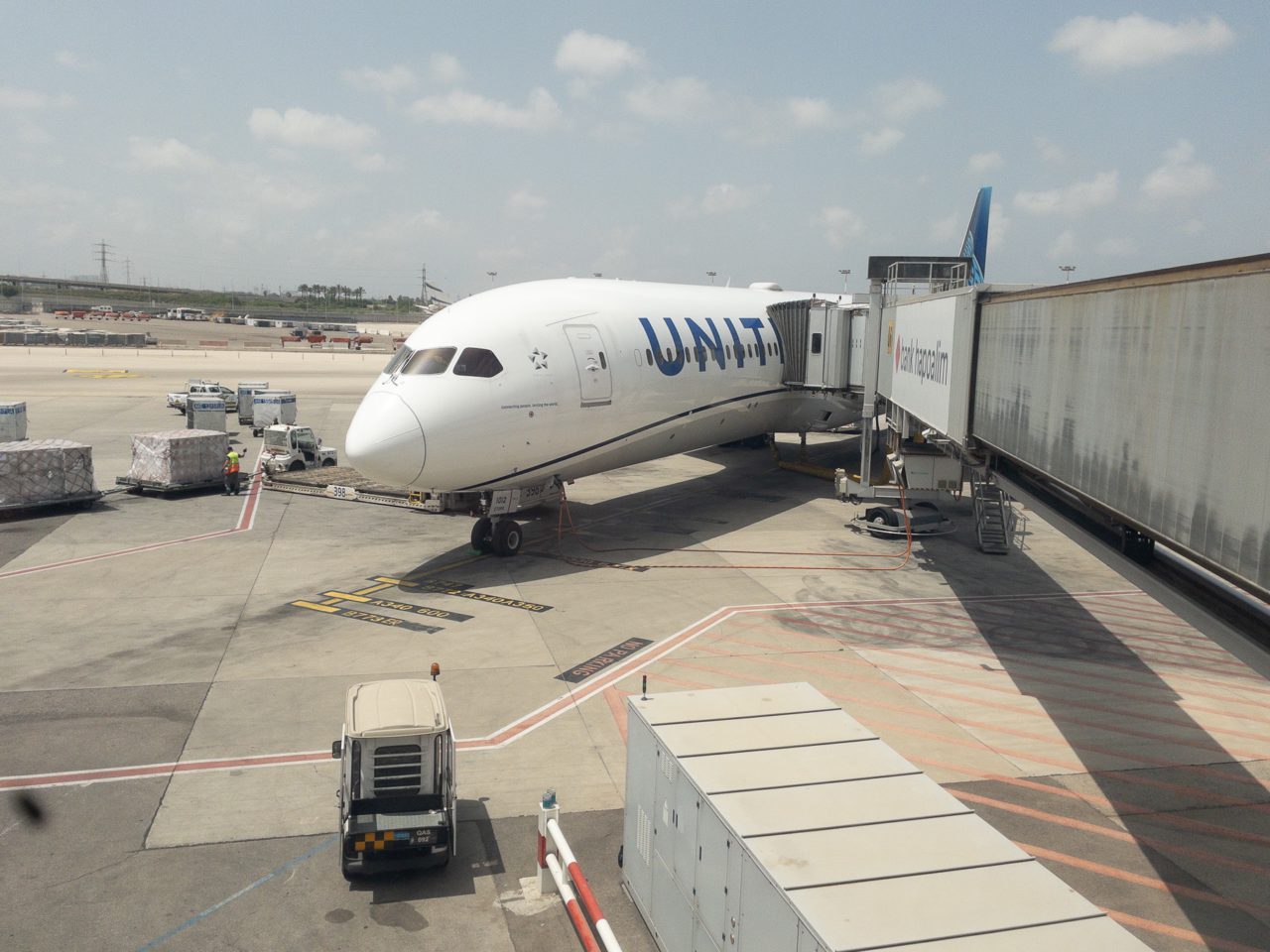
Onboard United flight 85 from Tel Aviv to Newark
After a brisk week of touring in Israel we are on the way home. Because Israel is a relatively small country the time on the bus was minimal and each day was jam-packed with visits to numerous religious and archeological sites. We were never on the bus for more than two hours at a time. Compare that to previous international tours with transfer days that required all-day bus trips to get from country to country or city to city. Maybe I’m getting older, or maybe I’m a little out of travel shape after a couple of years at home, but the fast-paced nature of this trip was very tiring. I’ll need a few days to rest and catch-up on sleep. But, as a recent retiree, no need to go to work tomorrow!
Read More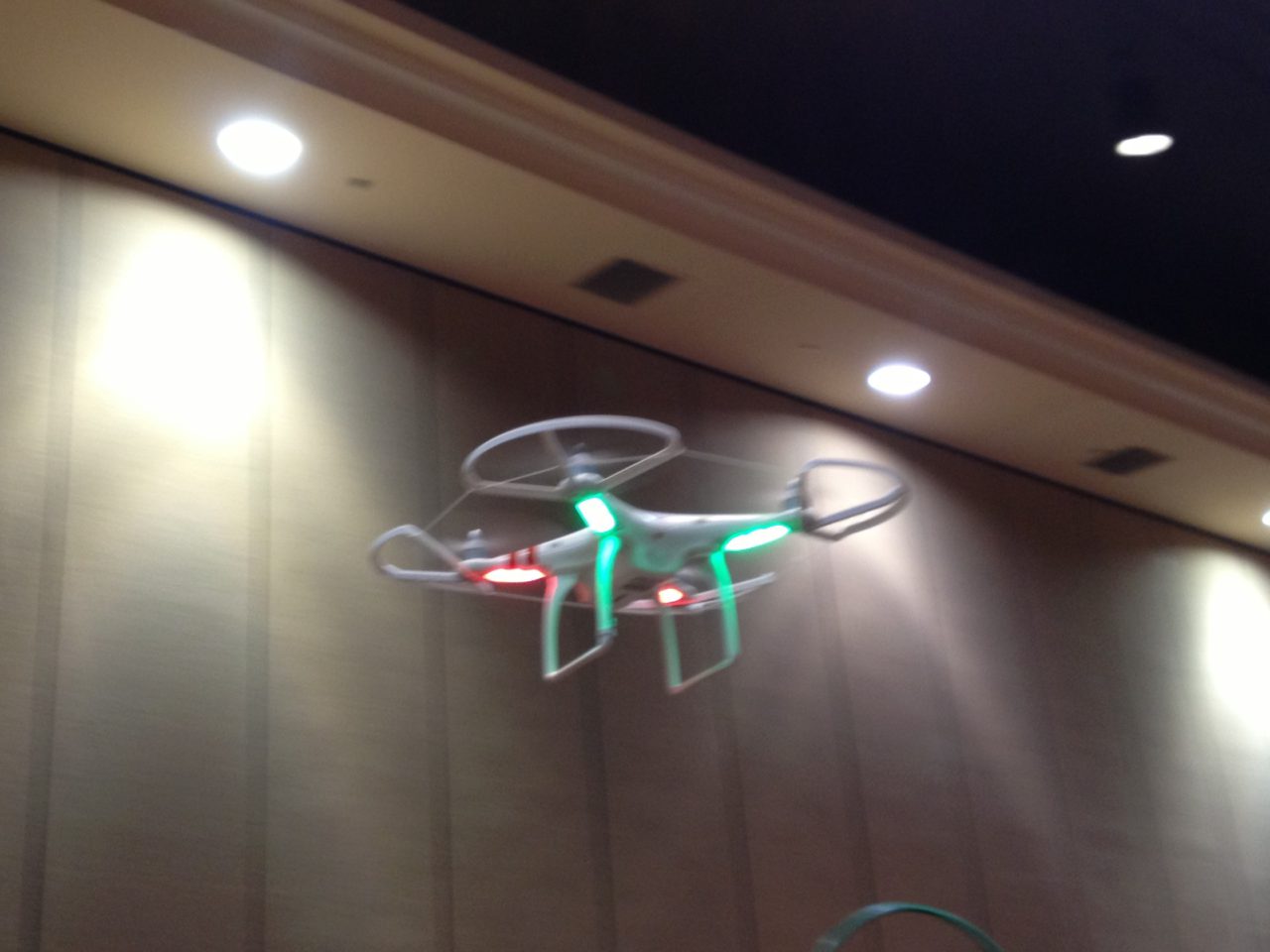
This week I’m in Las Vegas attending the Photoshop World 2013 conference for several days of photography and Lightroom workshops – starting today with Flight Training for Photographers….
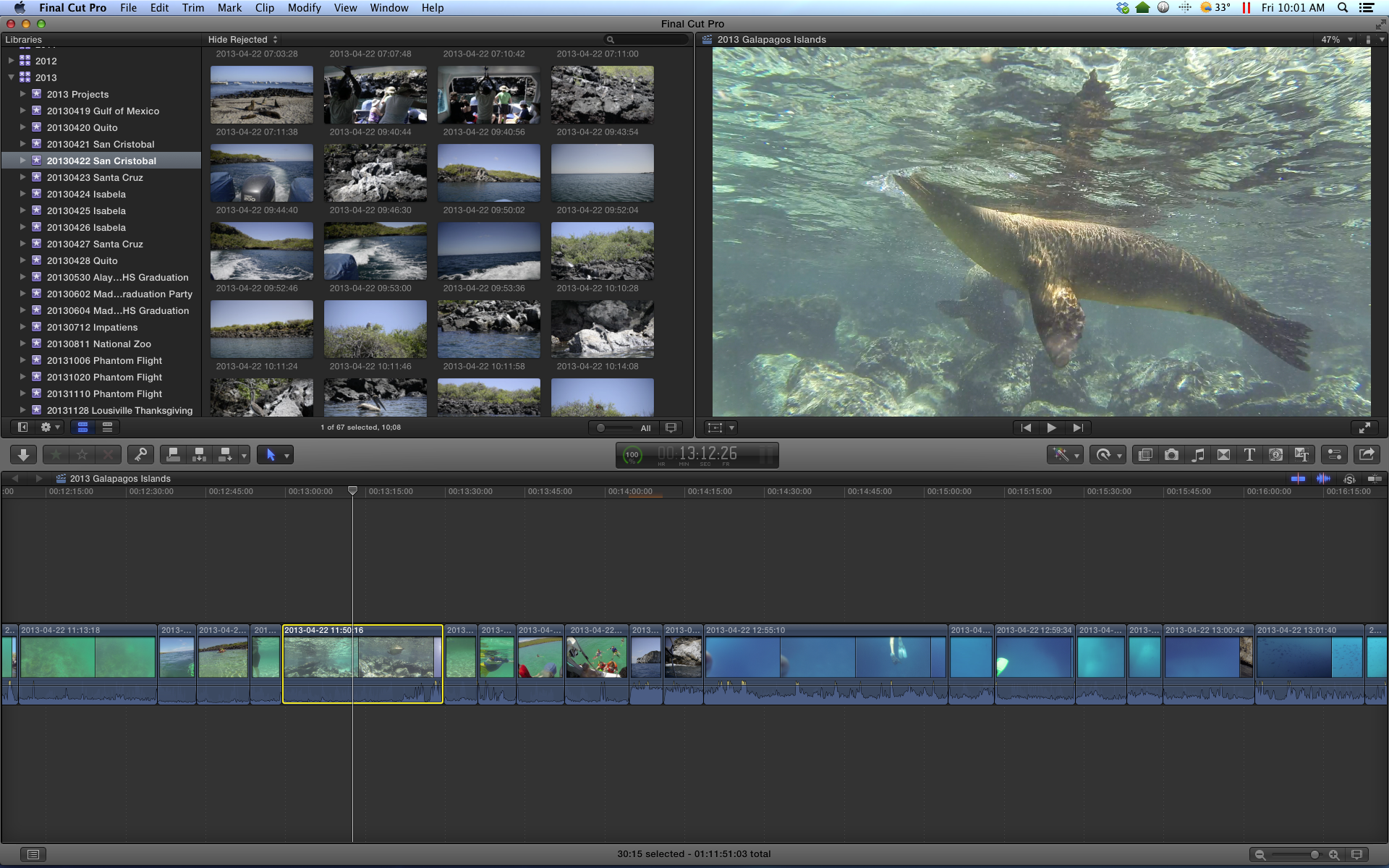
Two weeks after returning from the Galápagos Islands Adventure I’m finally done transferring the trip photo and video files from the SD cards to the computer. The transfer…
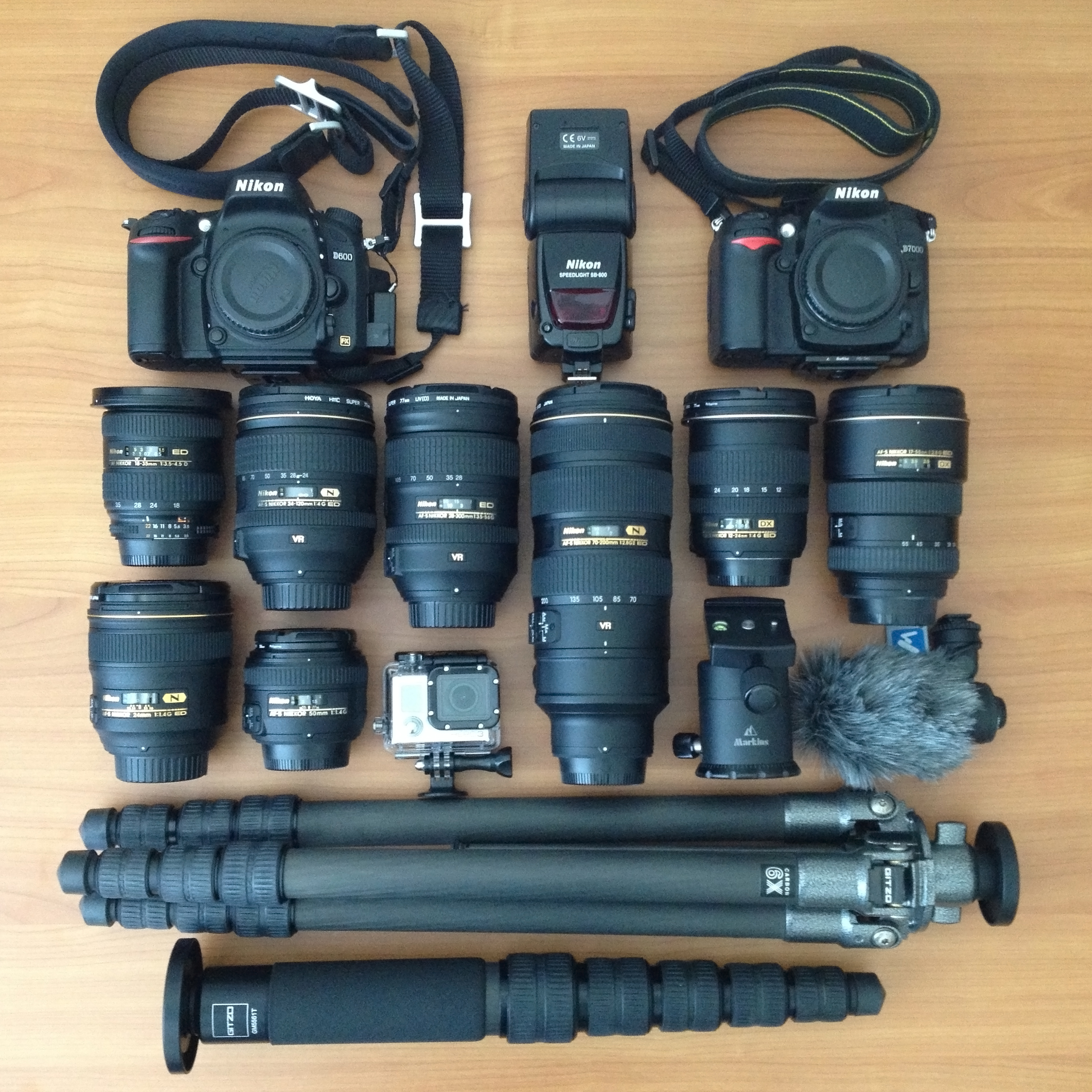
Here is the current set of gear … … and the complete gear list: FX Body NikonD600 24 MP DSLR FX Zoom LensesNIKKOR 18-35mm f/3.5-4.5D IF-ED – Wide…